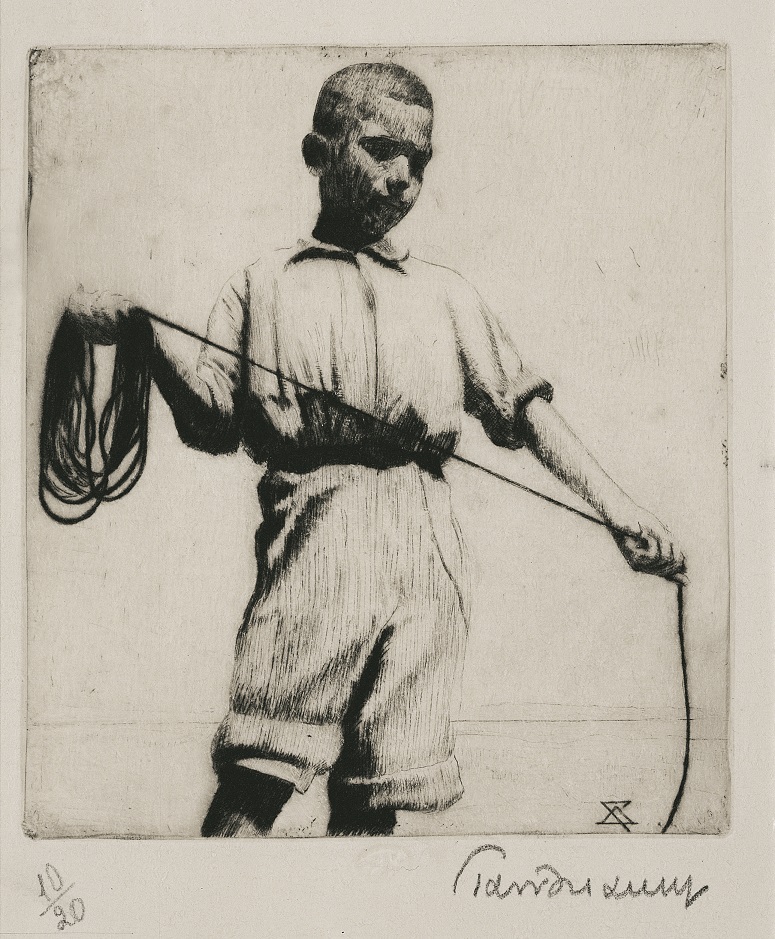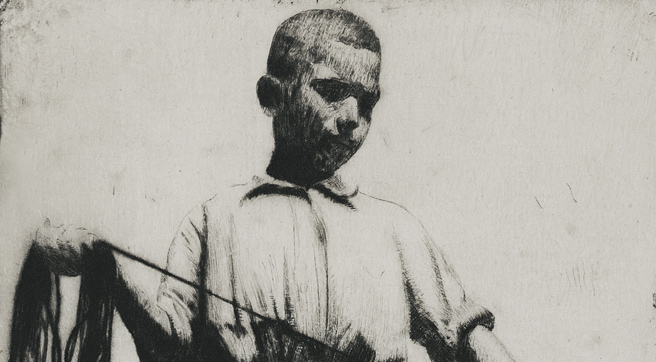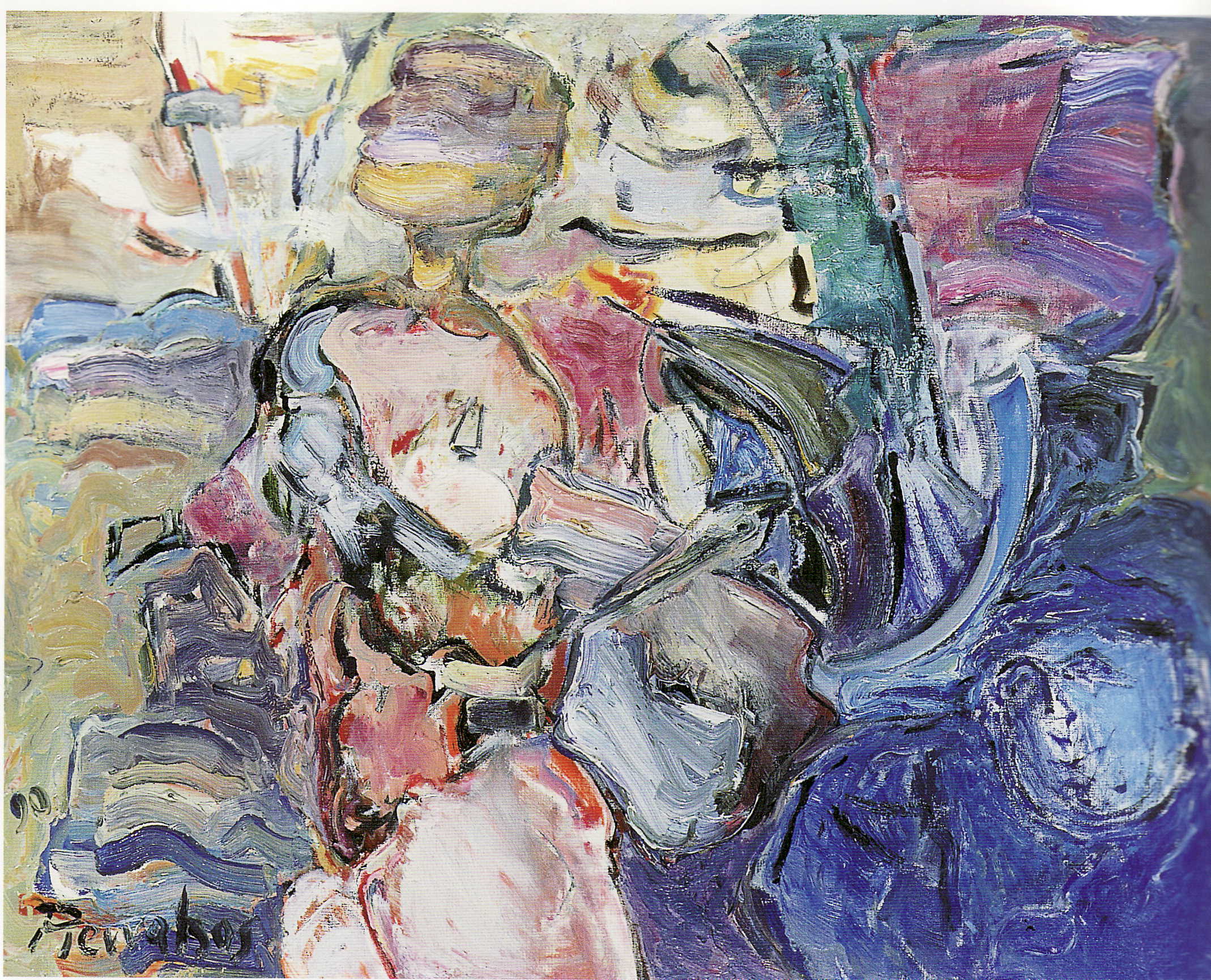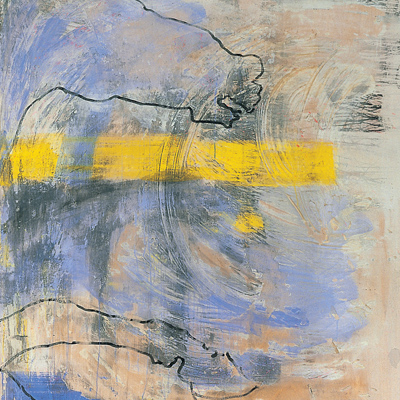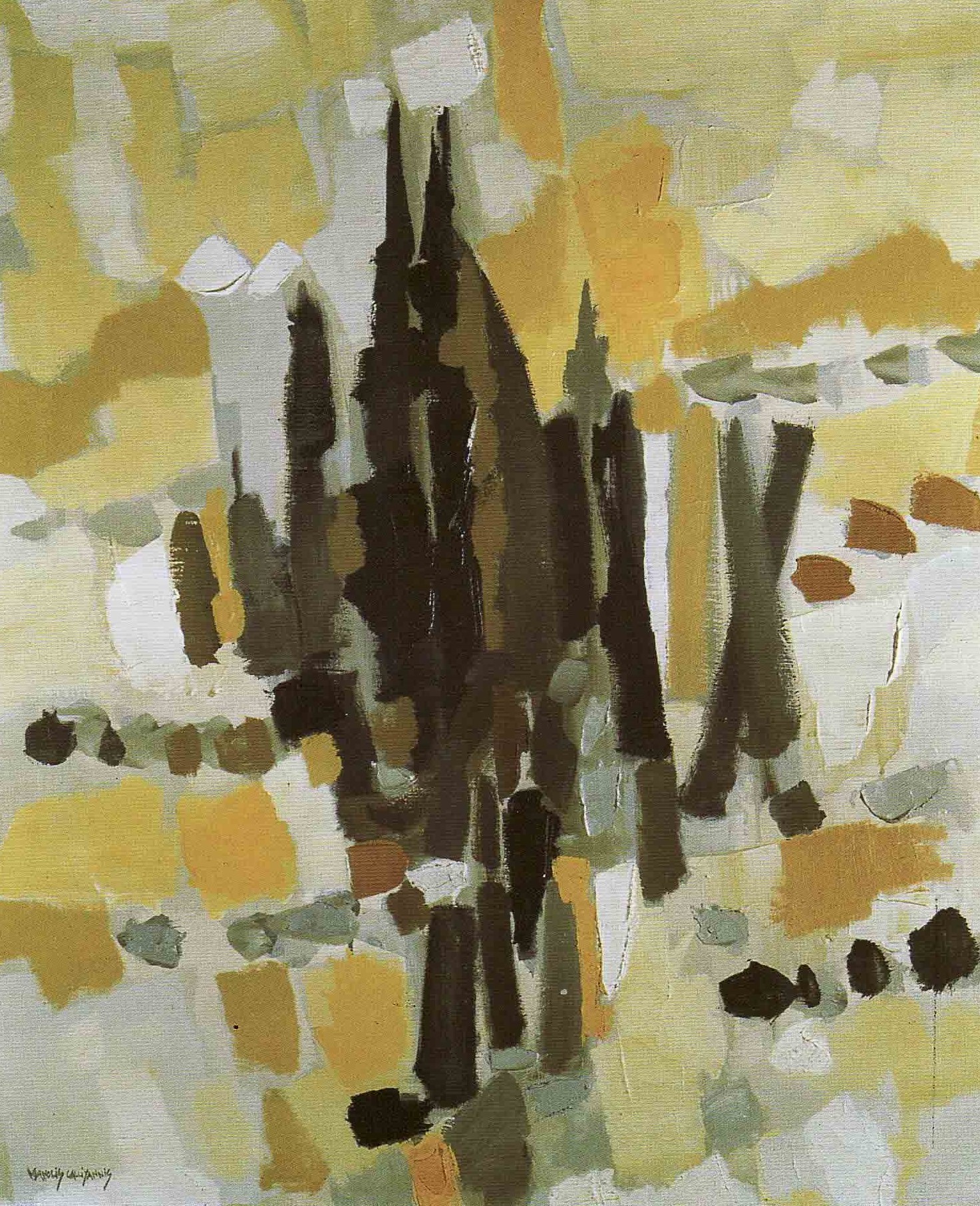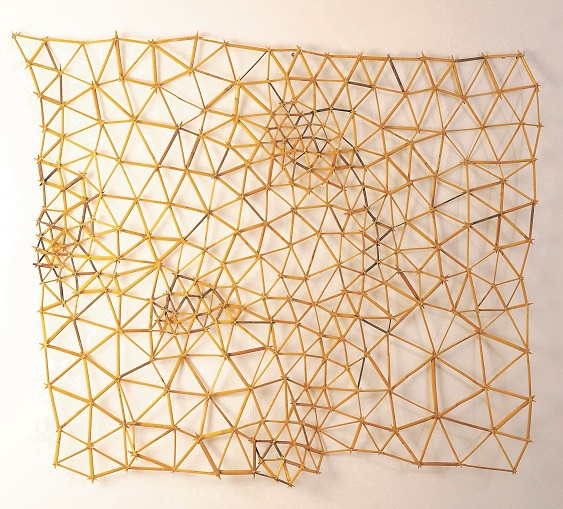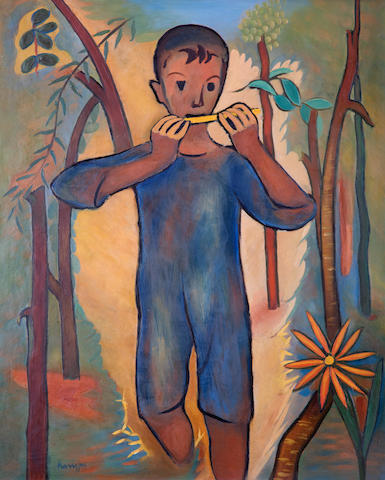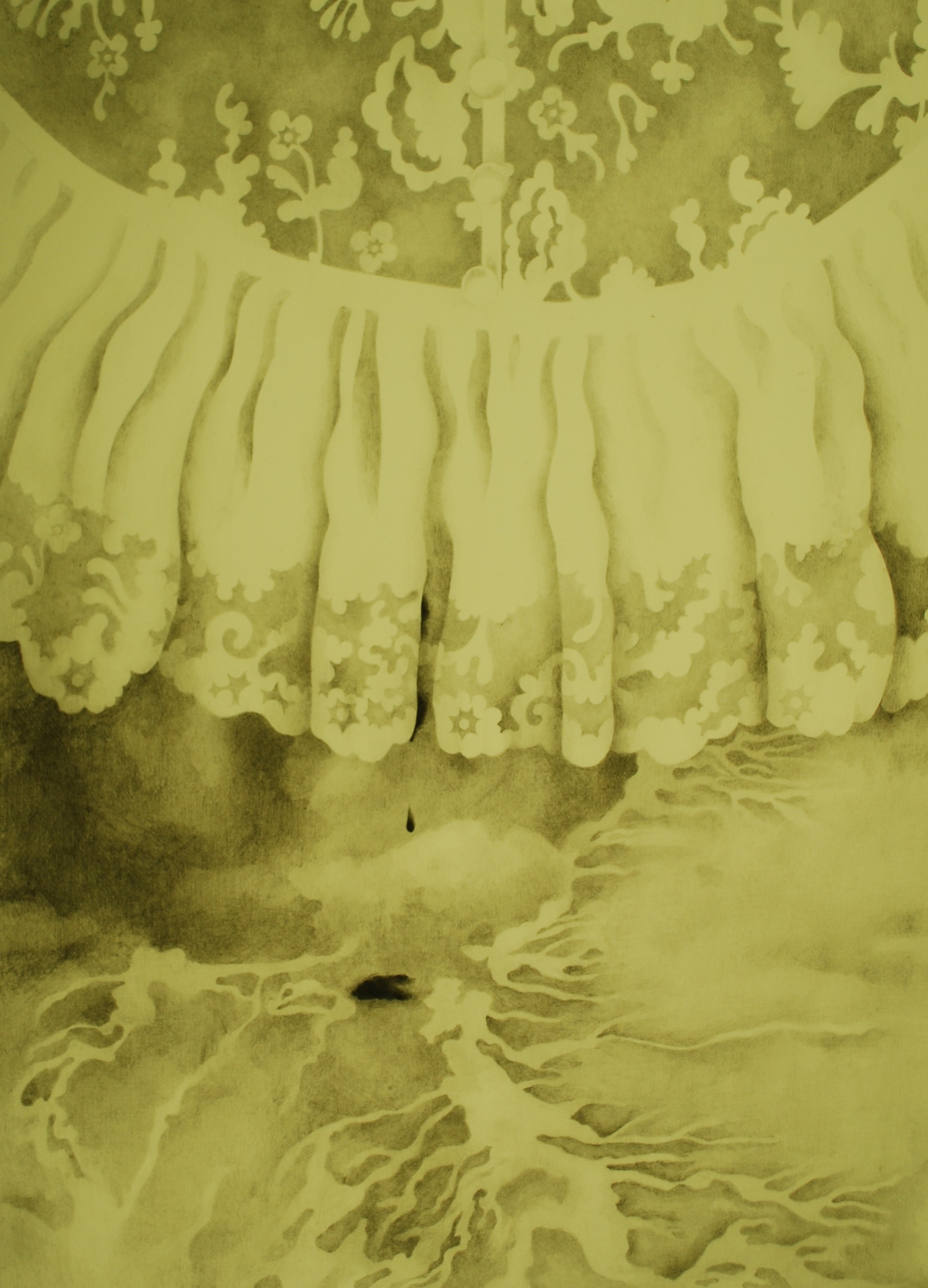Dimitris Yiannoukakis, Young Fisherman
The Young Fisherman is part of Dimitris Yiannoukakis ethographic works. The aquatint depicts a young boy and resembles a photograph. Yiannoukakis mainly worked with chalcography. Initially he created exclusively black and white prints. As of 1957, he became one of the first engravers in Greece to create coloured chalcography prints.
A photographic moment
The Young Fisherman is part of Dimitris Yiannoukakis ethographic works. The print depicts a young boy in a realistic and simultaneously idealistic manner. It resembles a photographic moment, based on tones of black and white. The artist paid particular attention to bold shading.
The young boy monopolises the focus of the print. He is standing and his body is rendered relaxed and slightly turned. His head is almost imperceivably bent downwards. In one hand he is holding a coiled rope. With the other hand he is pulling on the rope to uncoil it.
A piece full of contrasts
The Young Fisherman is dominated by contrast.
The curve of the coiled rope contrasts with the stark straight line of its uncoiled part.
The contrast in the lighting of the composition is also quite interesting. The body of the boy is rendered bright, with white clothes, but the source of the light is not apparent. In contrast, his face is dark and his features are indiscernible.
The contrast between the bright and dark areas, and the tone fluctuations are virtues that are highlighted on the piece. They are elements found in most of Yiannoukakis’ chalcography prints.
Stark and dense expression
Skilful representation is what typifies Yiannoukakis’ entire body of work. The same holds true for the Young Fisherman. The piece is mainly based on stark lines and dense expression.
The figure of the boy is animated and lively, but without much detail. The piece is exceptional, with freedom and emphasis on formality and substance.
His life in a nutshell
Dimitris Yiannoukakis (1898-1991) was born in Ermoupoli, on the island of Syros. He studied Painting and Engraving at the School of Fine Arts in Dresden (1921-1927), under Ferdinand Dorsch and Richard Müller. He continued with free studies in Paris.
He worked as an art director of the Aspioti brothers’ factory in Corfu.
He also worked on book illustrations and postage stamp prints.
Artistic influences
His studies in Dresden had a major influence on this print. The German city was the hub of the expressionists group Die Brücke (the Bridge). Other than expressionism, Yiannoukakis’ prints also have references to post-impressionism.
Yiannoukakis also worked with painting. As an engraver, he mainly focused on chalcography prints.
Favourite themes and artistic style
Yiannoukakis’ works cover a broad spectrum of themes: ethographic scenes, still life, nudes and landscapes.
In his rich engraving he mostly used the technique of chalcography, initially in its classic black and white version and then in colour. In fact, he was one of the first artists to create colour chalcography prints in Greece, as early as in the late 50s.
A recognised artist
Dimitris Yiannoukakis held his first solo exhibition at the Stratigopoulos Gallery in 1930. He also participated in the first Panhellenic Exhibition of Original Engraving held in Athens in 1938.
He presented his work in solo and group exhibitions in Greece and abroad. He also participated in the Venice Biennale (1934, 1940), the Alexandria Biennale (1963) where he was honoured, the Paris International Exhibition (1937) and many national exhibitions (he received an award at the Panhellenic exhibition of 1938). In 1962 he was honoured with the Silver Medal of the City of Paris.
The Young Fisherman by Dimitris Yiannoukakis is referenced in the Alpha Bank publication The Alpha Bank Collection. Paintings – Prints – Sculptures, edited by Irene Orati. The publication marks the 125th anniversary of Alpha Bank.
Buy the publication The Alpha Bank Collection. Paintings – Prints – Sculpture (only available in Greek) on the Alpha Bank e-shop.
The Alpha Bank Art Collection is not open to the public.
Research visits to the Art Collection can be organised upon request.
Contact us to book your visit.
